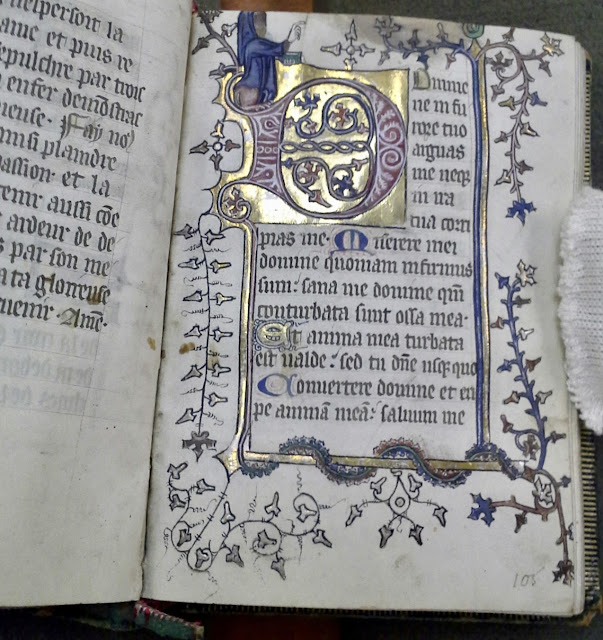 |
| By Max Ehrmann - Artwork by Anne Rita Taylor ©2017 |
I was recently invited, along with a few bookbinders, calligraphers & artists, to visit the Rare Books Collections in the MD Anderson Library of the University of Houston. It was very inspiring! I highly recommend visiting. Be sure to schedule a tour!
My biggest surprise was actually handling this Medieval book from the 1400s: Reims Book of Hours. When I visited The Getty Center and The Huntington Library in Los Angeles, their books were under glass and opened to a particular page. By the way, the medieval period lasted from the 5th to the 15th Century.
Lisa German, the Dean of Libraries at UH and Christian Kelleher, the Department Head of UH Special Collections were very informative about their Special Collections. So exciting to learn about these treasures! Go here to learn more about Special Collections at UH:
http://libraries.uh.edu/branches/special-collections/rare-books/
When I attended a demonstration at The Getty Center in Los Angeles, white gloves were worn while handling a piece of ancient art. Sylvana Barrett demonstrated how gilding and paints were made in the 1400's - here is her website: http://www.cennini21.com
I authored an article in the Newsletter for the Association for the Calligraphic Arts in 2004 about the two hour demonstration. Focusing on the painting of St. Andrew by Masaccio in 1426, Sylvana showed us how historically authentic materials: gold leaf, egg tempera, and terre verde pigment, were used.
Sylvana explained that distemper was pigment mixed with rabbit glue. Painted on fabric - it has a dry look such as The Annunciation by Dieric Bouts in 1450. It looks as if the paint could flake off, and is kept under glass.
 |
| Artwork by Anne Rita Taylor ©2017 |
With their limited art supplies, unlike the range we have now, it is amazing what the Medieval monks were able to accomplish six hundred years ago!
Please let me know if you have any thoughts about these historic treasures.
See more of the UH Digital Library here:
http://digital.lib.uh.edu/collection/reims/item/437/show/21
©Anne Rita Taylor 2017












